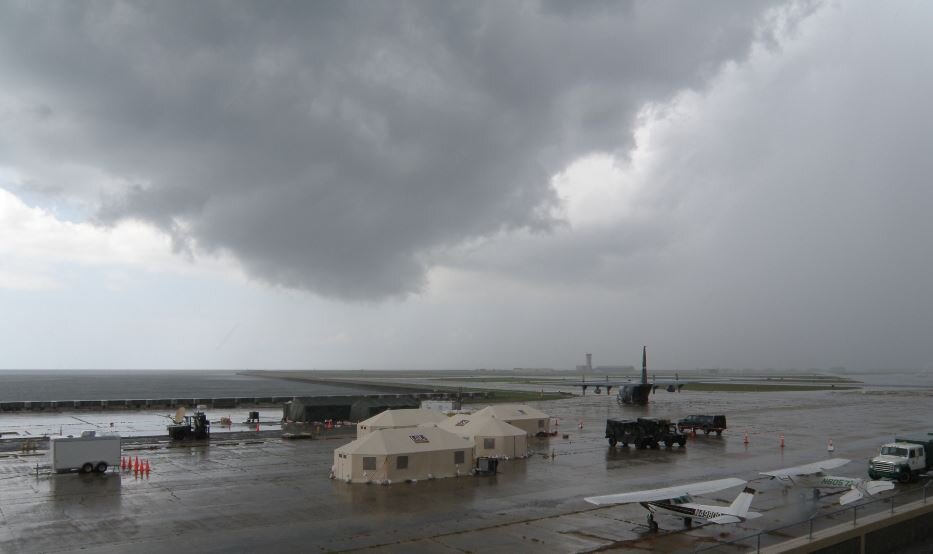Disasters, both natural and man-made can severely impact the areas where they occur. Their effects can manifest with little warning, surging beyond the capability of essential institutions to fulfill their missions in the face of spiking demand for resources and services. Creative solutions from strategically thinking leaders can be the difference between survival and extinction for organizations and individuals in these situations.
During the Coronavirus Disease 2019 (COVID-19), many hospitals saw a disproportionate amount of people seeking emergency care – especially in large cities. Little was known about the ad hoc processes needed to manage sudden and sustained influxes of infectious patients during a pandemic-level event. The Bronx was particularly overwhelmed, experiencing the highest hospitalization and mortality rates of the city’s five boroughs despite having the highest per capita number of hospital beds and the smallest number of elderly adults in NYC. In a paper published in the Western Journal of Emergency Medicine, July 2021, Doctor Joshua Moskovitz, MD, MBA, MPH, FACEP, Associate Director of Emergency Department Operations at New York’s Jacobi Medical Center, published a paper with a team of colleagues to capture the lessons learned from their perspective. Their article, “Impact of a Novel Emergency Department Forward Treatment Area during the New York City COVID-19 Surge” (https://escholarship.org/uc/item/0z38f2xt#main), discusses how they deployed two Western Shelter 1935 shelter systems as a Forward Treatment Area (FTA) immediately outside their ambulatory emergency room entrance, ultimately allowing them to discharge 80% of their patients without utilizing main emergency department (ED) resources.
The location, size, and function of the FTA provided several advantages for the hospital. ED leadership elected to set up the FTA within 15 feet of the ambulatory entrance to the emergency room and direct patients with COVID-19 symptoms to the FTA entrance instead of the building itself. Keeping the FTA near the emergency room, instead of using a distant-but-larger facility (such as the Javits Center) relieved the hospital of having to fully staff two facilities simultaneously. In fact, the hospital leveraged the low FTA manning requirements, keeping most ED personnel focused on critical-care patients. The nearness to the ED also meant that patients who needed emergent care could immediately transition to the main building as appropriate. Those patients that did not need emergency services were efficiently and safely discharged without having to enter the ED (79%). The FTA also provided a space where those patients with COVID symptoms (33%-50%) could be assessed without encumbering an entire room in the ED (policy for potentially infectious patients). This also reduced the exposure of non-COVID patients and hospital staff in the ED to patients with COVID symptoms. The smaller, mostly vinyl FTA also presented an easy area to sanitize after evaluating symptomatic patients.
The Western Shelter 1935 systems deployed to form the FTA used several additional sub-systems to ensure full functionality of the FTA. These included:
Insulated walls to better manage hot and cold weather
Generators for powering the facility and ensuring back-up power if municipal power failed
Wiring harnesses to distribute power for lighting, computers, and medical equipment
CL-ACXE1200 HVAC units for climate control
Additional options to add capability to an FTA in future scenarios include:
HVACs to create positive/negative pressure in the FTA
Patient privacy curtain systems to add up to 10 individual patient treatment areas in each 1935 shelter
Air scrubbers to filter the air
Divider walls to section off the shelters into specific zones
Shelving/Desks custom fit to shelter frame for equipping office space
In the end, the FTA established at the Jacobi Medical Center provided a model for other medical facilities to adapt and employ. Their forward treatment area proved an effective method to rapidly screen the increased volume of patients with a novel infectious pathogen in an urban environment with limited resources. This treatment area decreased the burden on the ED structure, was rapidly deployed, and effectively screened patients for a safe discharge home.
Contact our sales team for more information on our customizable shelter systems.














